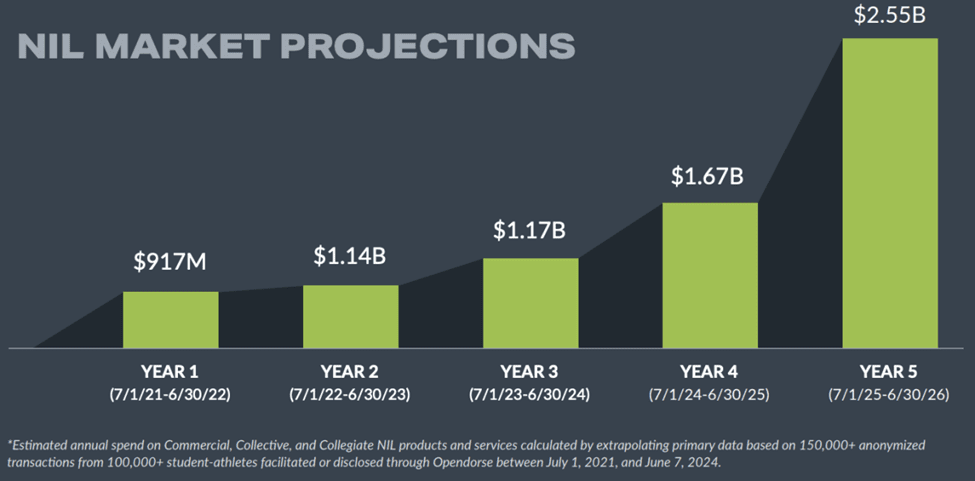The NIL Era: How Money is Reshaping College Football Roster Building
- Duke Doyle
- Mar 21
- 4 min read
The Rise of NIL in College Football:
Name, Image, and Likeness (NIL) rules have completely reshaped college football. What started as a way for athletes to earn money through endorsements has quickly turned into a game-changer for recruiting, roster management, and even competitive balance. NIL money isn’t just a perk, it’s now a major factor in where players sign, when they transfer, and how teams build their rosters. This shift has introduced both opportunities and challenges, forcing schools to adapt or get left behind.
How NIL is Changing Recruiting and Transfers:
For years, college football players couldn’t profit from their name or brand, while schools and the NCAA raked in billions. Now, NIL has opened the door for players to cash in, fundamentally changing how teams operate. The biggest shift is that college football now feels more like professional sports, where players make financial decisions about where to play. Schools with strong NIL backing can out-recruit and out-retain their competition while those that don’t, risk losing top talent. It’s not just about tradition or coaching anymore—NIL is the new arms race in college football.
Recruiting has always been about facilities, coaching, and NFL potential. Now, NIL money is a top priority for elite prospects. Some five-star recruits, like Nico Iamaleava, have reportedly signed NIL deals worth over $8 million before even playing a down of college football. It’s made such a big impact that NIL deals not only affect high school players, but also movement within the transfer portal. Players know they can leverage their talent for bigger paydays, creating a free-agency-like system where schools with deep NIL pockets have a major advantage.
The Power of NIL Collectives:
Most major programs now have NIL collectives, booster-funded organizations that pool money to secure top talent. These collectives operate like salary pools, making sure players get paid in a way that technically follows NCAA rules. Schools like Texas Tech offer guaranteed NIL payments to nearly their entire roster ($25,000 annually per player), while others focus on key positions. Texas, for example, pays every scholarship offensive lineman $50,000 per year. Schools without strong collectives are struggling to compete with larger schools and conferences.
1870 Society & The Foundation - Ohio State
Spyre Sports Group - Tennessee
Texas One Fund - University of Texas
Division Street - University of Oregon
Canes Connection - University of Miami
The NCAA’s NIL Dilemma:
The NCAA initially tried to limit NIL’s role in recruiting by banning pay-for-play deals, but those rules have become unenforceable. Courts have blocked most NCAA efforts to regulate NIL and booster-funded NIL deals are now a major factor in where top players commit. The collapse of QB Jaden Rashada’s $13.85 million Florida NIL deal fell apart after he had already signed, highlighting how chaotic this system can be. With little oversight, schools and boosters are operating in an almost unregulated marketplace.
NIL and Team Culture:
One concern with NIL was how locker rooms would handle players making different amounts of money. So far, most teams have managed this by spreading NIL opportunities across rosters or using team-wide deals. NIL has also helped some programs retain players who might have left for the NFL. For example, Michigan’s Blake Corum stayed in college instead of going pro because his NIL deals made it financially worthwhile. In this way, NIL is keeping top talent in college longer than before.
NIL’s Impact on Competitive Balance:
At the same time, NIL has widened the gap between powerhouse programs and smaller schools. Power Five collectives can generate over $10 million per year for NIL while Group of Five schools often struggle to raise even $1 million. This has turned smaller programs into “farm systems” where top performers transfer up for bigger NIL paydays. To compete, some mid-major schools focus on community-based NIL deals or spreading money across entire rosters instead of chasing a few high-dollar recruits.
To put things into perspective let's compare two college playoff teams. Arizona State Sun Devils had a collective of $10.6 million in NIL funds while Texas Longhorns has $22.3 million in their NIL fund. This gives the Texas Longhorns an advantage for building a deep roster to make a playoff run. However, it also helps when you have a Manning on your team.
The Future of NIL in College Football:
The way NIL is shaping roster building is only getting started. The NCAA is considering allowing schools to directly pay athletes through trust funds, which could bring more structure to the system. There’s also talk of federal NIL legislation to standardize rules. Regardless of what happens next, NIL is here to stay and will remain a major factor in how college football programs build their teams. Schools that embrace NIL and use it strategically will dominate recruiting while those that resist the change will struggle to keep up.
Balancing NIL with Coaching and Culture:
While NIL has changed the landscape of college football, it doesn’t replace the need for great coaching and a strong team culture. The best programs don’t just throw money at recruits, they combine NIL opportunities with player development, winning traditions, and a locker room environment that keeps players engaged. NIL is a tool, not a guarantee of success. Programs that blend strong leadership, a winning culture, and smart NIL strategies will be the ones that thrive in this new era of college football.





